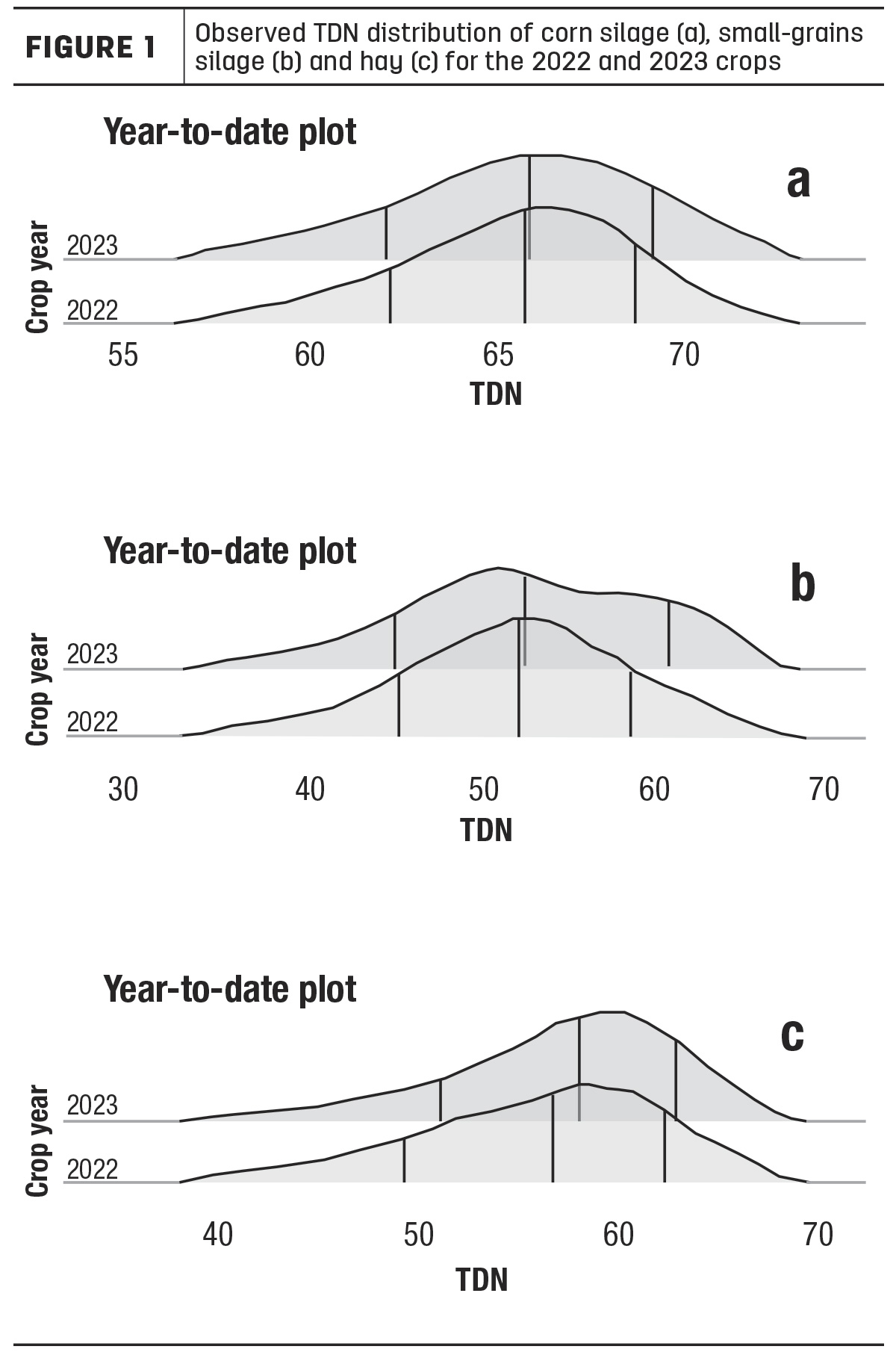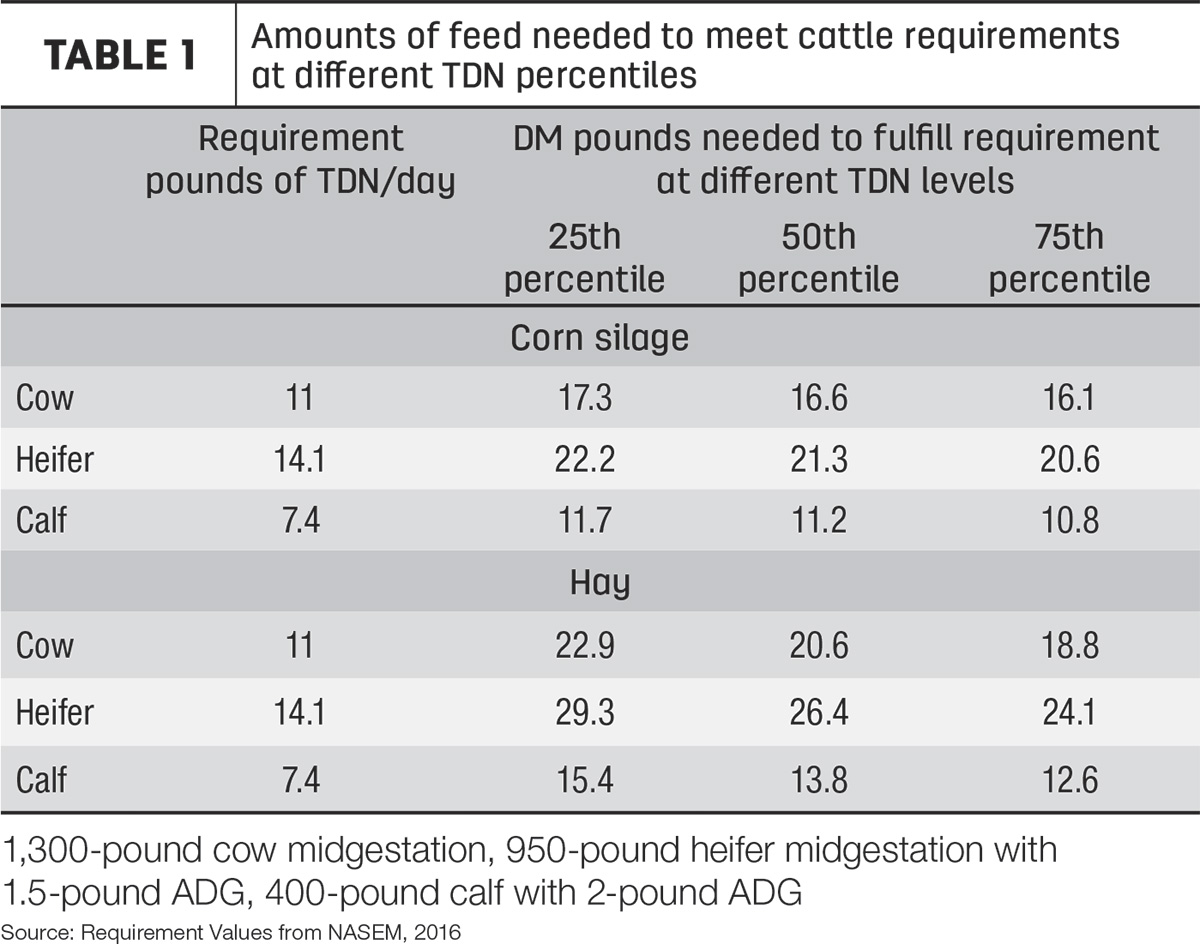There are many different opinions regarding the U.S. cattle herd and what 2024 will hold for inventory levels. While some believe rapid regrowth is right around the corner and even underway, others are hesitant that regrowth of the herd from historic lows will be a slow and potentially delayed process.
As the year continues, USDA estimates will help provide further clarity as to what direction it’s moving and at what speed it’s occurring. December cattle on feed estimates were up 3% from 2022, while placements were down slightly – sending mixed messages. However, softening markets may be playing some role in these dynamics. While we may not have the means to know when and how the U.S. herd is going to return to previous levels, it’s never too soon to start making preparations on the farm if growth of the herd is the goal.
Feed and forage availability
Feed is a major consideration when it comes to herd expansion. Drought was prevalent across the U.S. this past year. Some areas previously faced with prolonged drought saw much-needed precipitation, while others experienced the inception of drought conditions. Currently, areas of the central Plains, Southwest and Southeast are facing drought conditions. Additionally, many of these areas facing drought are also seeing some of the largest growth in cattle on feed numbers, including Kansas, Oklahoma, Texas and Minnesota. Other states such as Colorado, Idaho and South Dakota are seeing cattle growth, yet may have better forage stores.
The milder start to winter in many areas of the U.S. also has allowed for prolonged grazing of pastures and cornstalks to help stretch the inventory of stored feeds. This likely helped to avoid excess stress on hay markets, as most areas aren’t seeing higher-than-expected forage demand. Additionally, lower-than-expected exports are likely contributing to adequate hay supply in the western U.S.
Although the current hay supply seems adequate for the current U.S. cattle herd, growth will increase feed needs, and proper planning can alleviate some stress when it comes to ensuring operations have enough feed to accommodate larger herd sizes. Growing conditions are out of our control and have the power to shift feed inventory quickly, but proper management can help maximize what is harvested. Additionally, for stored feeds, proper feedout and storage are essential to realize their maximum potential. Feed prices remain high across the board, and decreasing shrink is an important component of maximizing returns.
Herds already focusing on growth
For operations looking to grow or in the process of growing, regardless of stored feed inventory or knowledge of spring pasture conditions, feed can still be purchased to accommodate this growth. Byproducts can be a great protein and fiber source to stretch forages. Blended properly with lower-energy forages such as cornstalks or wheat straw, these can achieve nutrient requirements while still being mindful of feed costs. When implementing these types of rations, anti-nutritional factors that can negatively affect cattle growth and health may be present. Cornstalks and straw can carry mold, yeast, enterobacteria and mycotoxins from stalk rots. Proper harvest and storage can help decrease the risk of some of these; however, others may already be present at harvest. If present, these can utilize valuable energy in immune system activation and cause health issues when found at high enough levels. Oftentimes, we are tempted to overlook dry feeds when it comes to feed hygiene issues, but if issues arise, these feeds shouldn’t be ignored as a potential culprit.
When considering existing silages in storage, proper feedout techniques are essential to maintaining the quality and maximizing the amount of feed available. Improper feedout can lead to aerobic deterioration of feed – which can impact the amount of nutrients available for the cow or calf to utilize. It can also lead to feed waste around the face of the bag or pile. Patching holes caused by weather events or birds will also help to minimize spoilage of the feed. When feeding out any feed, utilizing feedbunks can help to minimize waste and stretch feed.

Herds looking to grow within the year
For herds that may not quite yet be in the growth phase but expect to be soon, planning for feed availability can help accommodate growth when the time is deemed correct. As operations plan for summer and spring cropping and grazing, maximizing the nutrients harvested should always be a priority. There is a large variation in the total digestible nutrients (TDN) of forages tested, as can be seen in Figure 1.

Consider two situations: one operation with average TDN and another with TDN in the 75th percentile. The difference in pounds of feed required to achieve TDN requirements can be quite large. This difference for different classes of animals can be observed in Table 1. This additional feed can be used to stretch existing inventory across the herd or may even be used to help accommodate herd expansion. There are several ways to maximize the TDN of forages, but increasing starch and starch digestibility in corn silage and focusing on total-tract NDF digestibility (TTNDFD) in all forages is key. Harvesting at the proper time to optimize tonnage without sacrificing fiber digestibility should also be a priority. For silage, proper packing density and inoculant use can help preserve nutrients in the feed and reduce fermentation shrink.
Feed availability also allows for the ability to be more flexible as cattle markets fluctuate, allowing for higher cattle retention if markets are not ideal for marketing animals. Regardless of your herd growth plan, or even the U.S. herd growth throughout the year, maximizing the feed available through proper feed management will help decrease feed costs overall, leading to lower cost per hundredweight. And, while we can’t predict the future with a crystal ball, proper feed management can make a big difference in any operation’s bottom line.








